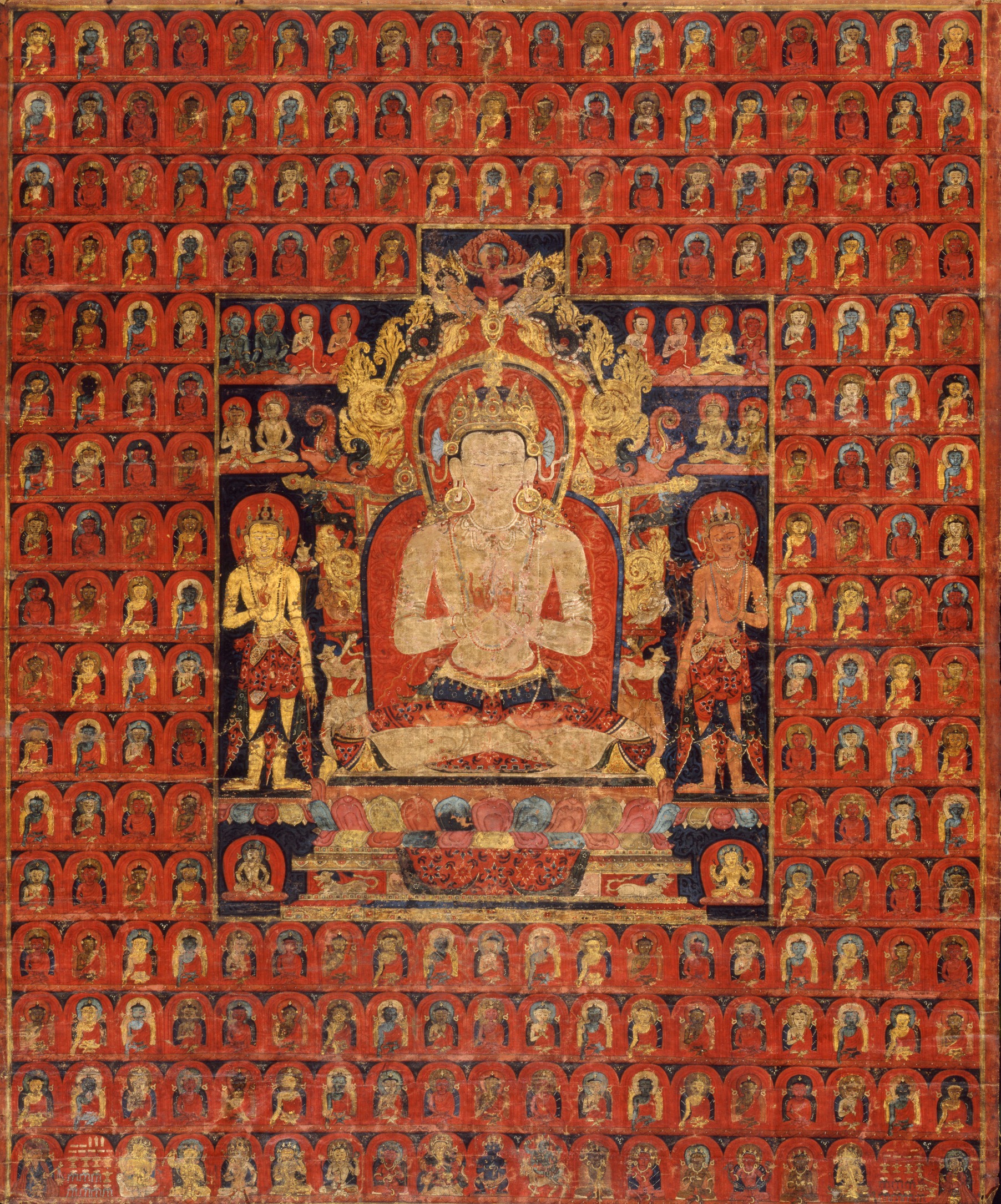|
The Five Jinas, cosmic Buddhas associated with the four directions and their central axis, appear prominently across the Himalayan art historical corpus. These sets are visual synecdoche for the initiation (abhisekha) of Shakyamuni as told in yoga tantra texts like the Tattvasamgraha. In these accounts, four progressive initiations elevate Shakyamuni to full enlightenment (abhisambodhi) and with it realization of his true identity as Vairochana. When painted on a thangka, these events become an exemplar through whose re-enactment subsequent isomorphic awakenings can take shape.

Given their soteriological importance, the Five Jinas are the single most important iconographic motif in Sarma Buddhist art. As early as the 11th century, Ngari temples associated with Rinchen Zangpo and the Kashmiri art style focus on the Five Jina motif of the yoga tantras. Five Jina motifs also figure prominently in the corpus of (11th-12th century) central Tibetan paintings, where Indian styles predominate. By the 13th century, however, new anuttara yoga tantra deities had largely eclipsed Vairochana and his yoga tantra imagery. It was during this time that Sakya masters commissioned a particularly important set of Five Jinas - which is now being conserved by San Francisco's Asian Art Museum. In these three magnificent paintings, artists have focused on the old yoga tantra motif, but here they employ a radical new style - the Beri, or Nepalese. The Beri employs deep detailing to create dimensional effects on each thangka. Each thangka in its turn is part of a larger dimension - that of the Vajradhatu mandala from which each derives. On these thangkas, the ordinary sense of vision becomes a laboratory in which we can directly watch two flat dimensions magically become three.
|

